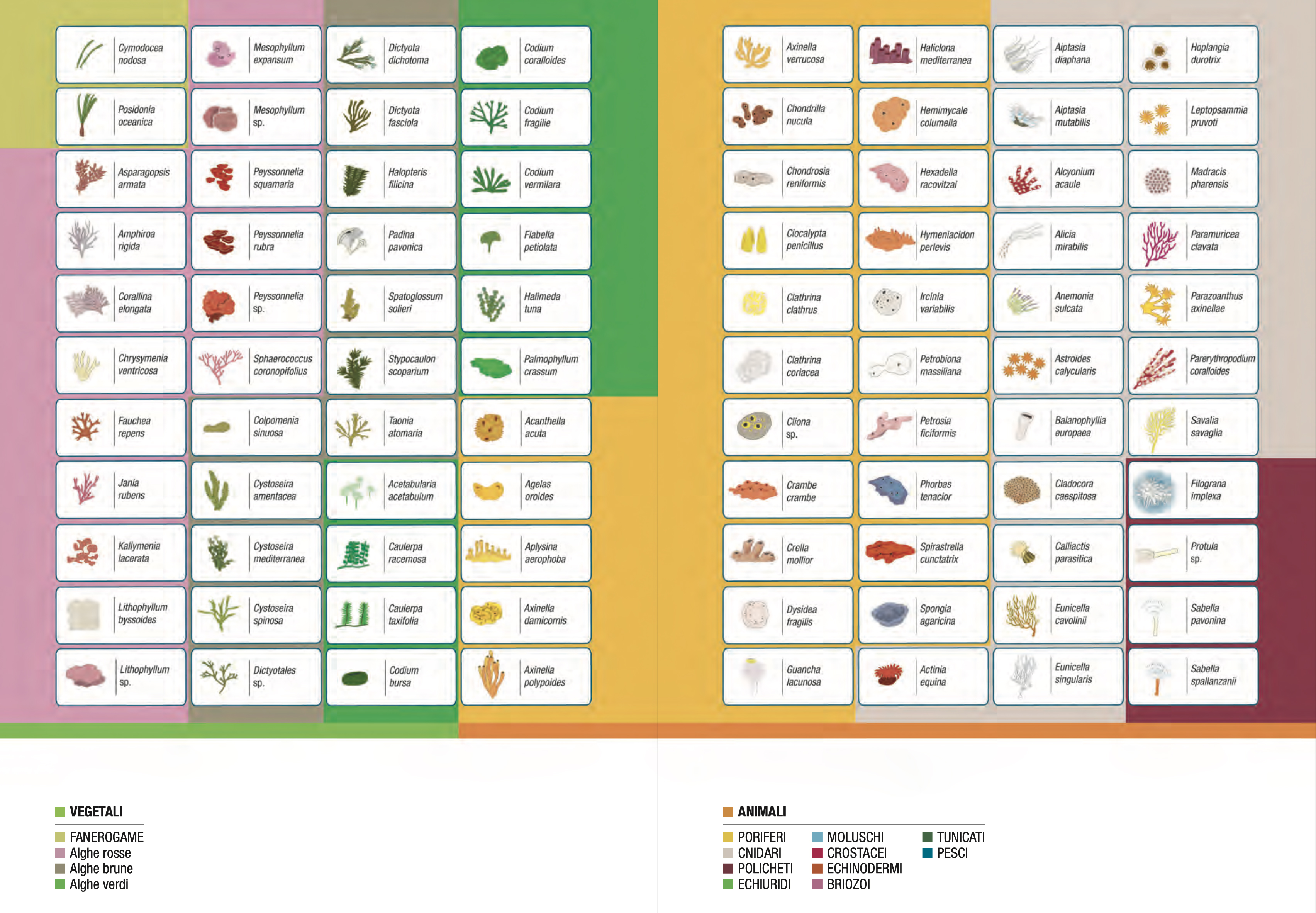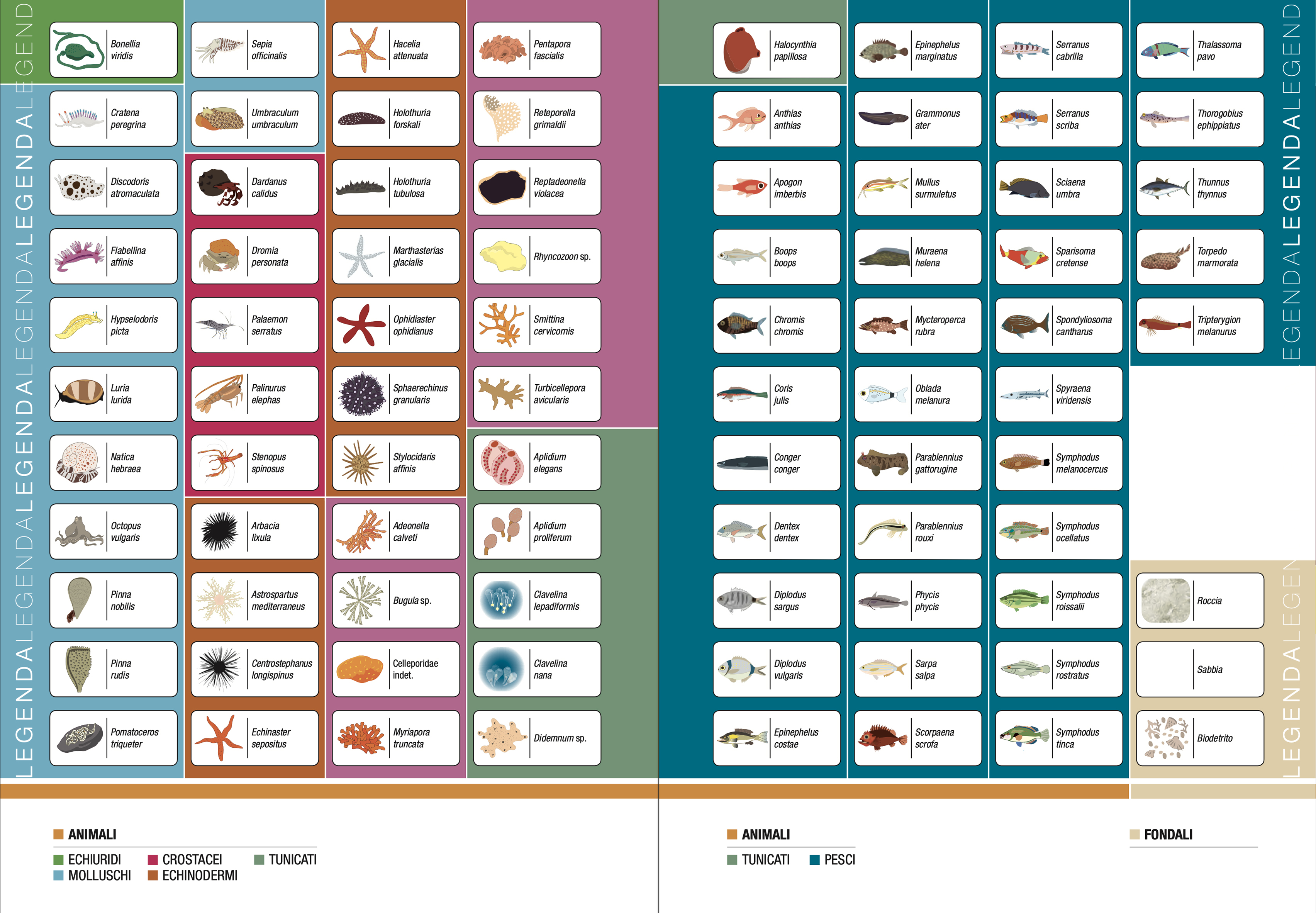Site 8/9 - Galeotta
The rock offers routes suitable for all levels in both snorkelling and diving with two different areas:
Site 1: Franata
From the first metres, among the Posidonia oceanica fronds and the numerous species of algae (Dictyotales spp, Caulerpa racemosa, Stypocaulon scoparium) that cover the rock, you can see the starfish Echinaster sepositus, the balloon seaweed Colpomenia sinuosa, the sponge Chondrilla nucula, the actinia Anemonia sulcata and the octopus (Octopus vulgaris), while looking towards the surface you can see the barracuda (Spyraena viridensis) and the dentex (Dentex dentex). Swimming northwards, at a depth of 8 m, a rock sculpted by marine action in the shape of a mushroom catches the eye. In the shaded portions, it is home to orange patches of the colonial madrepore Astroides calycularis, encrustations of the blue sponge Phorbas tenacior and branching colonies of the red bryozoan Myriapora truncata. The gorgonian Eunicella singularis and meadows of P. oceanica characterise the upright layer, while on the substratum the snake star (Ophidiaster ophidianus), the urchin Sphaerechinus granularis and the moray eel (Muraena helena) stand out. Between 15 and 20 m depth, the substrate becomes more sloping and cracked, and hosts a large specimen of 'elephant ear' sponge (Spongia agaricina). In the shadier areas we find the ascidian Halocynthia papillosa, the reticulated sponge Clathrina clathrus and the madrepore Leptopsammia pruvoti. Lobster (Homarus gammarus), lobster (Palinurus elephas) and magnosa (Scyllarides latus) take refuge in the crevices. At 20 m the vertical wall is home to the yellow gorgonian (Eunicella cavolinii) and many sponges (Agelas oroides, Hexadella racovitzai, Chondrosia reniformis, Axinella damicornis). On the biodetritic seabed, at a depth of about 30 m, lie landslide boulders with the white gorgonian (E. singularis), the algae Flabellia petiolata and Caulerpa racemosa, the echiuridae Bonellia viridis, while among the fish we can recognise the great seabream (Diplodus sargus) and the banded seabream (Diplodus vulgaris).
Site 2: Wall
The gently sloping rocky seabed, covered with rich algal populations and islands of Posidonia oceanica, becomes steeper as it descends along the east-facing wall. A great variety of species of thrushes populate these environments: the redtail (Symphodus melanocercus), the peacock (S. tinca), the musolungo (S. rostratus), the green (S. roissali). On the rocks, the colours of the red (Tripterygion tripteronotus), yellow (T. delaisi) and the lesser (T. melanurus) pepper contrast. Between 12 and 30 m, one can admire the fans of the white (Eunicella singularis) and yellow (Eunicella cavolinii) and red (Paramuricea clavata ) gorgonian, at the base of which there is a rich variety of benthic species: the yellow madrepore Leptopsammia pruvoti, the pink (Didemnum sp.), orange (Aplidium elegans) and red (Halocynthia papillosa) ascidians and many sponges of various colours. In the deep crevices one can find the lobster (Palinurus elephas), the red scorpion fish (Scorpaena scrofa), the sponge Petrosia ficiformis, on which the sea cow (Discodoris atromaculata) feeds, the false coral (Myriapora truncata), the bryozoan Reteporella grimaldii, the black sea urchin Centrostephanus longispinus and the red sea urchin with white polyps Alcyonium acaule. On the sandy seabed as well as on the surrounding boulders, yellow chandeliers of the sponge Axinella polypoides, clumps of P. oceanica, colonies of the white (E.singularis) and yellow (E.cavolinii) gorgonian, colonies of Parerythropodium coralloides, large specimens of Codium bursa and many other encrusting and leafy algae can be seen.
Legenda:


